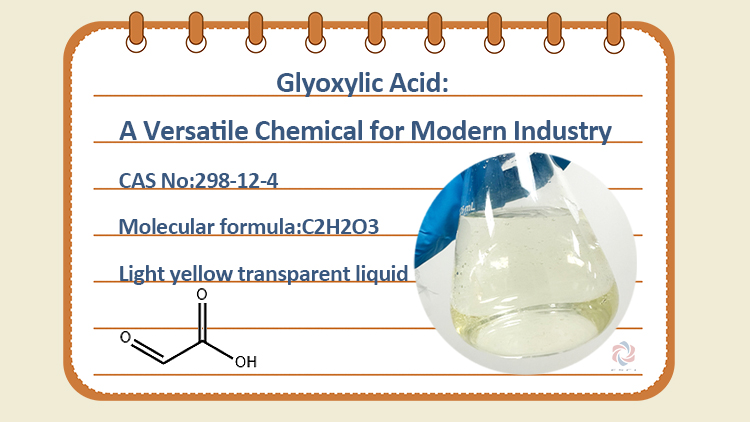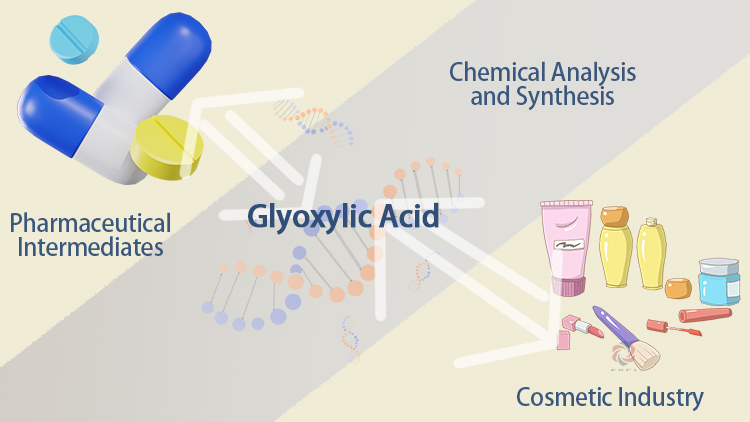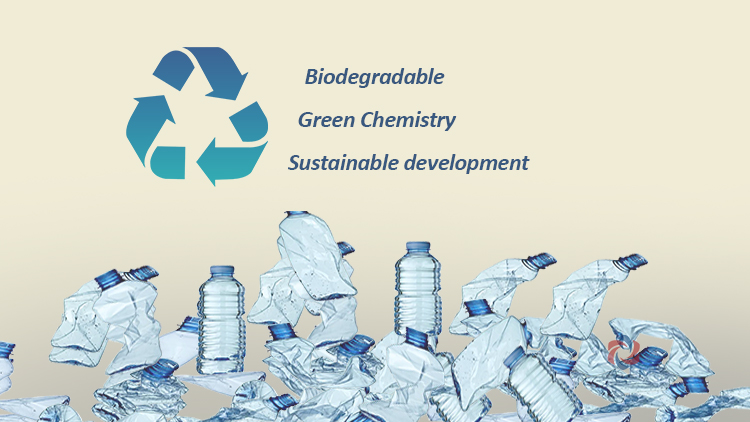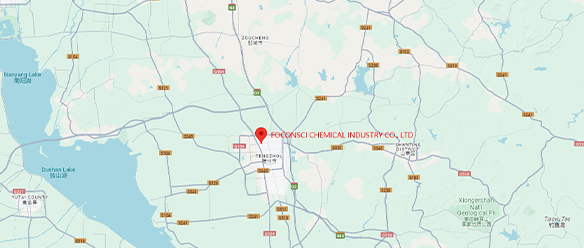Ácido Glicoxílico: Um Químico Versátil para a Indústria Moderna
Introdução e Propriedades Básicas do Ácido Glicoxílico
Ácido glicoxílico (CAS 298-12-4) , também conhecido como ácido formilformico, é um composto químico altamente reativo que contém tanto um grupo aldéia (-CHO) quanto um grupo ácido carboxílico (-COOH). Sua fórmula molecular, C₂H₂O₃, torna-o um dos compostos orgânicos mais simples e industrialmente significativos. O ácido glicoxílico está disponível em duas formas principais: como solução aquosa ou em forma cristalina. É solúvel em água, com ponto de fusão de 50-52°C em seu estado sólido.
A versatilidade do ácido glicoxílico está em seus dois sítios reativos, permitindo que ele participe de uma ampla gama de reações químicas. Essas propriedades o tornam um bloco de construção crucial para sintetizar numerosos produtos químicos e farmacêuticos, destacando seu valor na indústria de produtos químicos finos.
Aplicações do Ácido Glicoxílico em Várias Indústrias
1. Intermediários Farmacêuticos :
Uma das aplicações mais importantes do ácido glicoxílico é como precursor na produção farmacêutica. Ele serve como intermediário na síntese de vários ingredientes farmacêuticos ativos (IFAs). O ácido glicoxílico é frequentemente usado em reações que exigem aldéias para condensação ou derivação, como a produção de alantoína ou vanilina, que são utilizadas em aplicações dermatológicas e aromáticas, respectivamente.
Produto Associado :
Vermelho Metilênico (CAS 493-52-7) : Este indicador garante o equilíbrio correto de pH durante os processos farmacêuticos envolvendo ácido glicoxílico.
2. Indústria Cosmética :
Em cosméticos, o ácido glicoxílico desempenha um papel fundamental como ajustador de pH e conservante. Notavelmente, também é usado em tratamentos de alisamento de cabelo, onde seu grupo aldéico forma ligações semi-permanentes com a queratina, alterando temporariamente a estrutura do cabelo. O benefício está em sua toxicidade relativamente baixa em comparação com outros alisadores à base de aldéia.
3. Análise Química e Síntese :
O ácido glicoxílico também é empregado na química analítica, onde funciona como agente redutor ou reagente-chave em vários ensaios. Brometo de potássio (CAS 7758-02-3) é frequentemente usado em combinação com ácido glicoxílico em métodos analíticos para criar reagentes estáveis para análise de produtos farmacêuticos e químicos finos, garantindo produtos finais de alta qualidade.
Ácido Glicoxílico em Reações de Polímeros e Cruzamento
Uma das aplicações mais empolgantes do ácido glicoxílico está na química de polímeros, onde atua como agente de cross-linking, contribuindo para o desenvolvimento de materiais avançados. Seus grupos funcionais permitem que ele forme ligações entre as cadeias de polímeros, tornando-o ideal para produzir plásticos biodegradáveis ou melhorar as propriedades mecânicas dos materiais.
O ácido glicoxílico é particularmente útil na produção de plásticos e resinas termoendurecíveis, melhorando a durabilidade e a resistência. Também é utilizado em polímeros para tratamento de água devido à sua capacidade de formar complexos estáveis com íons metálicos.
Produtos Associados :
- Azobis(isobutironitrila) (CAS 78-67-1) : Um iniciador de polimerização popular que trabalha sinergicamente com o ácido glicoxílico na criação de matrizes poliméricas, especialmente em processos de polimerização por radicais livres.
- Quitosana (CAS 9012-76-4) : O ácido glicoxílico modifica a quitosana, um polissacarídeo natural, melhorando sua solubilidade e funcionalidade — valioso para aplicações biomédicas.
Impacto ambiental e sustentabilidade
A mudança em direção à sustentabilidade na produção química destacou o ácido glicoxílico como uma opção mais amigável ao meio ambiente. Ao contrário de aldeídos e ácidos mais perigosos, o ácido glicoxílico é considerado relativamente seguro e biodegradável, alinhando-se com os princípios da química verde.
L-Valina (CAS 72-18-4) , um aminoácido produzido por métodos bio-basados, frequentemente complementa o ácido glicoxílico na produção de biopolímeros. Similarmente, licopeno (CAS 502-65-8) , um antioxidante natural, pode ser usado em formulações que buscam combinar benefícios para a saúde com sustentabilidade , Por exemplo, no desenvolvimento de materiais sustentáveis, o licopeno pode ser usado como aditivo para fornecer proteção antioxidante, enquanto o ácido glicoxílico pode ser usado como agente de cross-linking na produção de polímeros. A combinação dos dois pode ser aplicada no desenvolvimento de embalagens de alimentos biodegradáveis, que não só podem estender a vida útil dos materiais de embalagem, mas também atender aos requisitos de proteção ambiental verde.
A compatibilidade do ácido glicoxílico com matérias-primas de base biológica aumenta seu apelo para fabricantes que buscam desenvolver produtos ecológicos. Com o crescimento do interesse em químicos renováveis, o ácido glicoxílico está pronto para desempenhar um papel-chave no futuro dos processos industriais sustentáveis.
Conclusão e Recomendações de Produto
Resumindo, o ácido glicoxílico (CAS 298-12-4) é um composto altamente versátil com aplicações em várias indústrias, desde farmacêuticos e cosméticos até produção de polímeros e química verde. Suas propriedades químicas únicas o tornam um bloco de construção valioso tanto para processos industriais tradicionais quanto emergentes.
Em Foconsci Chemical Industry Co., Ltd. , oferecemos uma ampla gama de produtos químicos de alta qualidade para otimizar suas formulações. Com um compromisso com padrões internacionais e sustentabilidade, estamos dedicados a melhorar a eficiência de sua produção e a qualidade de seus produtos.
Sinta-se à vontade para nos contatar para mais informações ou para solicitar um orçamento personalizado!


 EN
EN
 AR
AR
 BG
BG
 HR
HR
 CS
CS
 DA
DA
 NL
NL
 FI
FI
 FR
FR
 DE
DE
 EL
EL
 HI
HI
 IT
IT
 JA
JA
 KO
KO
 NO
NO
 PL
PL
 PT
PT
 RO
RO
 RU
RU
 ES
ES
 SV
SV
 TL
TL
 IW
IW
 ID
ID
 LV
LV
 LT
LT
 SR
SR
 SK
SK
 VI
VI
 HU
HU
 TH
TH
 TR
TR
 GA
GA
 CY
CY
 KA
KA
 LA
LA
 MN
MN
 KK
KK
 LB
LB





